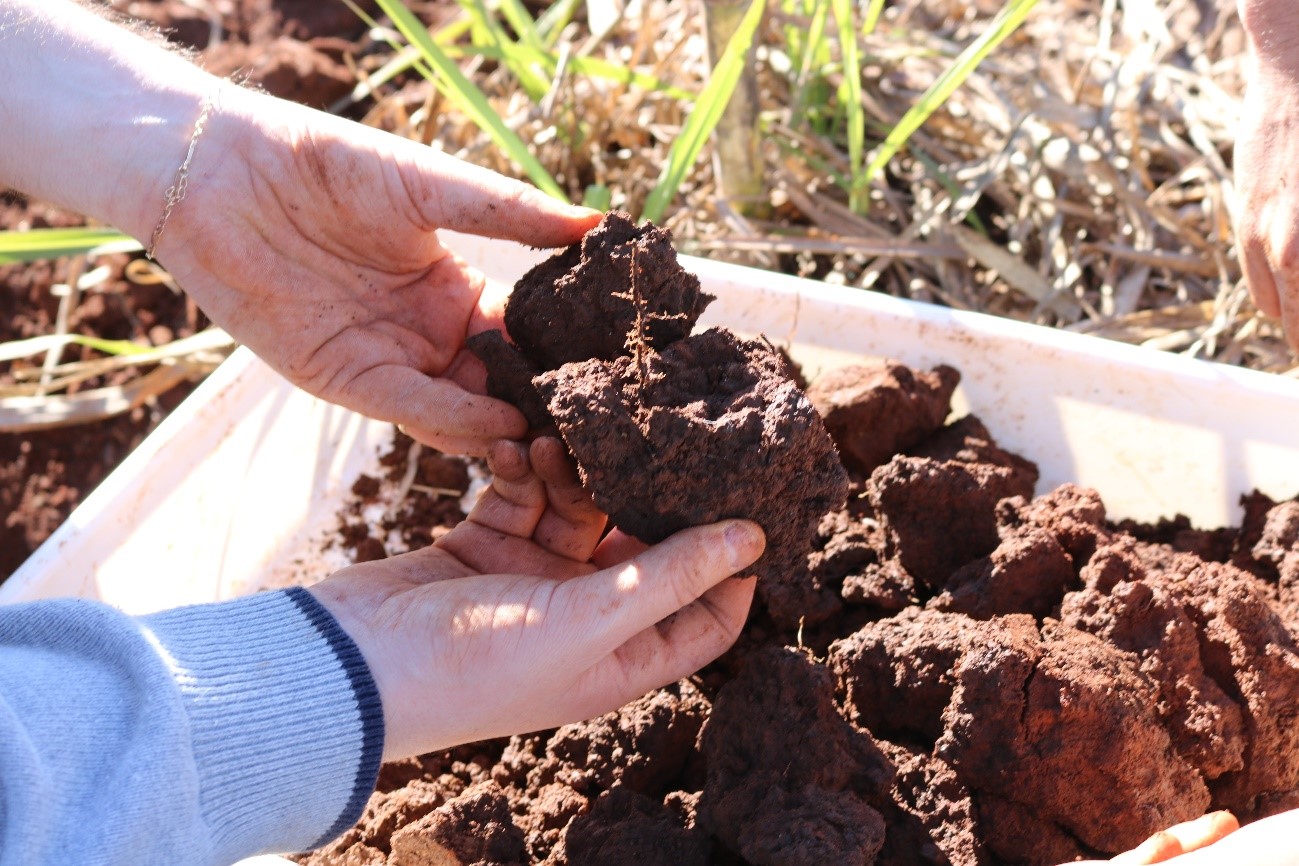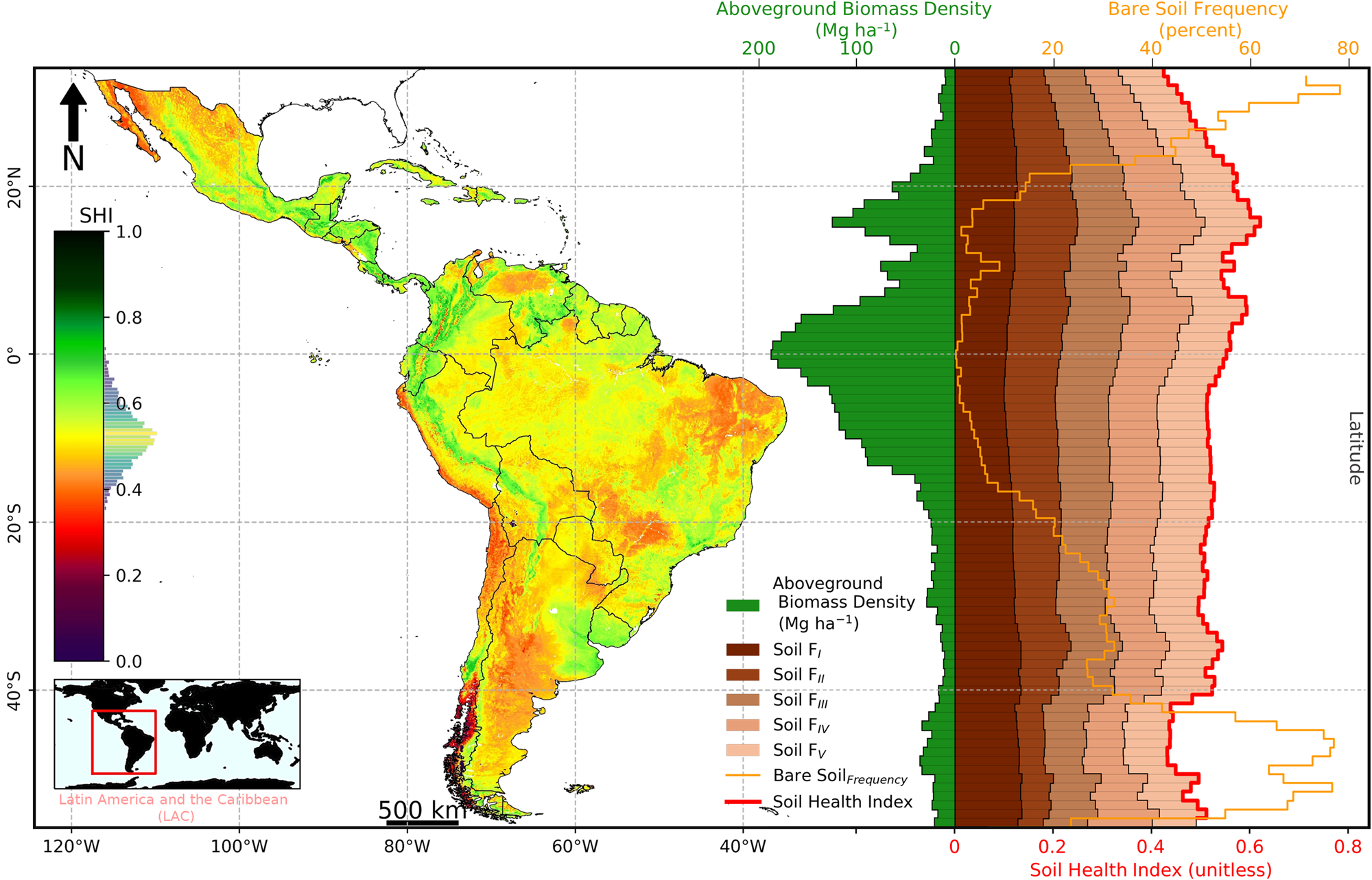


The most critical areas are concentrated in arid and savannah regions, such as the Caatinga and Cerrado (photo: Maurício Cherubin/USP)
Published on 08/14/2025
Agência FAPESP* – An article published in the journal Communications Earth & Environment presents the first soil health map of Latin America and the Caribbean (LAC) and points the way to public policies aimed at conservation and sustainable management.
According to the study, countries such as Colombia and Venezuela lead the way in terms of the extent of healthy soils, while regions such as the Brazilian Northeast, northern Mexico and parts of Chile and Argentina face the greatest challenges.
The work was led by researchers from the Luiz de Queiroz College of Agriculture (ESALQ) and the Center for Carbon Research in Tropical Agriculture (CCARBON), both at the University of São Paulo (USP). They used remote sensing technology and machine learning to map at high resolution the physical, chemical and biological indicators that define soil health.
According to Raul Poppiel, lead author of the article, the mapping revealed that 38% of the soils in the LAC region are considered unhealthy, i.e., degraded. Another 28% are in moderate condition and only 34% are in good health.
The most critical areas are concentrated in arid and savannah regions such as the Caatinga and Cerrado biomes, while the healthiest soils are found in the humid equatorial zones. The Amazon, although covered by vast plant biomass, generally had average to low soil health indices, underscoring the vulnerability of the biome and the urgency of conservation efforts.
“Soil health is fundamental not only for agricultural production, but also for the balance of ecosystems, which makes it crucial for mitigating and adapting to climate change,” says USP professor Maurício Cherubin, deputy coordinator of CCARBON, a FAPESP Research, Innovation and Dissemination Center (RIDC).
The research was also supported by two Thematic Projects (14/22262-0 and 21/05129-8).
According to the article, factors such as deforestation, poor land management and climate change have exacerbated soil degradation. “We found a direct relationship between areas with a higher frequency of exposed soils [without vegetation cover] and worse levels of soil health,” explains José Alexandre Demattê, professor at USP, co-author of the article and one of the world’s leading authorities on the use of soil mapping technologies.

credit: CCARBON-USP
Technology at the service of soil
According to Poppiel, the study’s differentiator lies in the use of high-resolution maps built with a large amount of geo-referenced soil data, remote sensing and machine learning algorithms. This innovative approach improves the use of available data to provide an integrated and detailed assessment of soil health.
According to Jean Novais, a postdoctoral researcher at ESALQ who also signed the paper, the methodology allowed for an in-depth analysis of essential soil functions such as carbon storage, water retention and support for plant growth. In addition, the researchers identified the main intrinsic factors that influence soil health, highlighting critical indicators such as density, total porosity, carbon content and water availability for plants. The approach combined technologies such as cloud computing and empirical knowledge applied to Earth observation data to create a model capable of representing the status of the region’s soils, resulting in an unprecedented study.
“From the conception to the final design of the article, we went through several discussions between the authors, editors and reviewers in order to find the most complete and clear way to present the panorama of the soils of this region, which is so important for our planet and which faces socio-economic and environmental challenges,” says Novais.
The study provides a solid scientific basis for developing specific public policies for different biomes and countries in the region. “Mapping like this makes it possible to direct investments and restoration programs to the most critical areas in order to maximize environmental and socio-economic outcomes,” says Cherubin.
Global discussions
Brazil plays a central role in soil health in Latin America due to its vast territory and agricultural importance. In 2025, the country will host the United Nations Climate Change Conference (COP30) in Belém, besides having received the Latin American and Caribbean Soil Carbon Research Symposium (LAC Soil Carbon) in Rio de Janeiro, and the 34th Brazilian Soil Science Congress in São Luís. In 2026, CCARBON will host the 10th International Symposium on Organic Matter, an event that will be held for the first time in Latin America. These meetings will be important opportunities to highlight scientific advances, share regional experiences, and strengthen the commitment to sustainable soil management practices.
According to the researchers, the results of the study point to the urgent need to adopt sustainable practices such as no-till systems, restoration of degraded pastures and integrated management. They also highlight the importance of international cooperation, standardization of monitoring methods and continued investment in science and technology.
The article “Soil health in Latin America and the Caribbean” can be read at: www.nature.com/articles/s43247-025-02021-w.
The interactive maps can be viewed using the Earth Engine platform; to download the data, click here; the full raster files can be accessed in the Zenodo repository; the distribution of the Soil Health Index (SHI) classes between biomes and LAC countries can be seen in the Sankey interactive diagram.
* With information from ESALQ-USP
Source: https://agencia.fapesp.br/55608